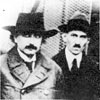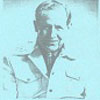Ether Technology
 by Rho Sigma
by Rho Sigma
Forward by CAPT. EDGAR D. MITCHELL, Ph.D.
“A CHANGE OF CONSCIOUSNESS”
“The view from space which I was privileged to have of our planet is an event that has profoundly affected my life. The pictures you have seen in books, magazines and on television help give some sense of that awesome but magnificent sight. But photography has its limits and a photograph cannot tell you of the way my philosophy and my commitment to philosophy has been changing since that voyage to the moon.” Thus began an address written by the former U.S. astronaut, Capt. Edgar D. Mitchell, and presented August 25, 1972, to the 21st International Conference on Parapsychology and the Sciences in Amsterdam by my colleague, NASA Engineer James B. Beal.
“To see a small, majestic planet Earth floating in a black sky—in its blue and white splendor is something you cannot forget. It stays with you profoundly, long after the splashdown, the hero’s welcome and the parades have been forgotten. Because the view from space has shown me—as no other event in my life has—how limited a view man has of his own life and that of the planet.
“Man fancies himself the highest development in nature—the ruler and most intelligent of creatures on Earth. About that notion, I have strong reservations. If animals could communicate with us, and some experiments going on now indicate they might some day—I will suggest that the first thing they would say is; how glad they are not to be human. Because no other animal commits the atrocities and stupidities that men do. In our surfeit of knowledge but paucity of wisdom, we’ve come near the brink of global destruction. The possibility of nuclear Armageddon is very real. The possibility of our extinction due to environmental pollution is just as real and only a little bit slower than using fission or fusion. Certainly these man-made threats to life on Earth cast some doubt on the supremacy of human intelligence.
“So the situation is desperate, and I became acutely aware of that as I gazed at Earth from a quarter of a million miles away. It put a new perspective on things far beyond just the visual dimension. I could see the potential of the planet, if it were to function in accordance with the natural design of the Universe. I could see what Earth can be if Man could choose to make it so. Yet I knew back on Earth people were fighting, stealing, raping, deceiving—totally unaware of their individual part, or responsibility for, the possible future of the planet; just living unconsciously or distrustfully or greedily or callously or apathetically. And at the same time other people were living in poverty, ill-health, near-slavery, starvation, fear and misery from prejudice or outright persecution, because as individuals and as a planet we have not had the will to change these conditions.
“As I said, those thoughts and perceptions stayed with me and worked on my mind. I could see the problem; but even more importantly, I began to see a solution. It’s the only possible solution but it will be enormously difficult to achieve. The solution is: a global change of consciousness. “Man must rise from his present ego-centered consciousness to sense his intimate participation in the planet’s functioning, and beyond that, in the functioning of the Universe. Otherwise we’re doomed. It’s as simple as that. It is not for the Universe to bow itself to man. It is for man, who inhabits an insignificant little planet, to find within himself, individually and collectively, ways to bring his consciousness into attunement with the Universe.”
“Fear”; “prejudice”; “outright persecution” were some of the key terms in Mitchell’s address. The reported facts in this book will bring into focus the rather startling conclusion that “human nature” really hasn’t changed much since the Italian philosopher, Giordano Bruno, was burned alive at the stake in Rome, Feb. 17, 1600—almost four centuries ago.
During those dark ages of the Inquisition, the concept of heresy was very much in vogue. Today we are inclined to feel secure and confident in the belief that we live in an enlightened and progressive age. Or are there still fields of endeavor in the present, considered to be scientific heresies? Perhaps the conspiracy of the Inquisition has only been replaced by a less spectacular, but by no means less effective, conspiracy of silence? At times it almost seems as though the religious dogmas of the past have been superseded by the more insidious scientific dogmas of our day. There can be little doubt that research reports and experimental results seeming to run counter to accepted viewpoints can be either actively suppressed or purposely ignored whenever they tend to challenge a tenuous, hard-won equilibrium . . . . Outsiders with the audacity to announce new findings—scientific pioneers daring to question the established foundations of tenets considered sacred and infallible remain highly suspect.
“Prejudice! Outright persecution!” were some of the strong terms used in Mitchell’s address. “Just living greedily …” was another stern warning of that modern-day Savonarola of the space-age, Capt. Edgar D. Mitchell. Between his warnings and the following statement made to a Congressional panel in Washington, May 1974, there could indeed be a connection pertaining to the present world energy crisis. It was made by Ralph Nader, the consumer advocate, who charged that American energy companies are actively blocking development of new forms of energy that threaten to cut into their profits:—”The energy industry is more interested in an energy source it controls.” According to the AP news piece, he also accused large oil companies of keeping devices from being developed through a ‘suppression of technological efficiency’:
“The fuel industry wants to sell oil, gas, coal and uranium. Yet with reasonable research and development programs this country could develop far more abundant, cleaner and safer energy sources,” said Ralph Nader.
Is it suppression or simply neglect by inertia? An American quip states that if there is anything more afraid of controversy than the average government funded scientist, it is two of them.
The reader will be able to decide for himself whether technological and scientific research into new energies is being suppressed or merely neglected. In the case of talent without power, versus power without talent, the documented reports, experiments and patents listed in this book will speak for themselves.
As an essential part of the introduction of this book a short review of the course of the history of inventions and discoveries is listed below. This rather shocking review, published in an Engineering Publication in 1963, caused the author to be “called on the carpet,” receiving in his personnel file the admonition:
“It is restated that any journalistic activity along this line should be submitted for approval through company management.”
The Content of the “Objectionable” Historical Review follows:
“Late in the 16th century, Sir William Gilbert said, ‘Science has done its utmost to prevent whatever science has done.'”
1. Only about 40 years ago, Professor Herman Oberth, the teacher of Dr. Wernher von Braun, offered his book, By Rocket to Interplanetary Space to about 10 different publishers. Each sent it back to him. Most had probably never read more than the title. A one-time expert, Geheimrat Spiess, who reviewed Oberth’s book, wrote, “We believe the time has not yet come for delving into such problems as these—and indeed probably never will come.”
2. In his day, professor Goddard was called “Moon-mad Goddard.” But last July the House passed a bill to establish March 16 as National Goddard Day. This is the anniversary of the day in 1926 when Goddard launched the first successful liquid-fueled rocket. Yet NASA’s Deputy Administrator, Dr. Hugh Dryden, reported in the May, 1962 Saturday Evening Post, “One day in April last year a distinguished group of medical men called on me to argue that men still did not have the basic research needed to risk launching astronaut Alan Shepard. Manned space flight, they claimed, was just not feasible yet. When I tried to explain that we had to learn by doing, they threatened to go over NASA’s head to the President! The next day, Cosmonaut Yuri Gagarin went into orbit.”
3. Conservatism is always the most formidable barrier to progress, and scientific truth is no respecter of recognized authorities. “It is assuredly most uncomfortable for scientists with a hard academic glaze to be confronted with an upsetting of the apple cart,” said Dr. George CO. Haas, himself a scientist. To refuse to see new facts, to impede progress, to curb science, is to imitate the cartographers of old Europe, who used to write on their maps at the Pillars of Hercules (Gibraltar): “Hie deficit orbis” (Here the World Ends).
4. The forces of Conservatism, often coupled with an astonishing and profound lack of humility, are so strong that many scientists willingly believe that facts which cannot be explained by current theories do not exist. In 1830 the Royal Medical Society claimed, “The fast movement of trains causes terrific mental disturbances to the travellers as well as to the onlookers”. Contemporary scientists laughed at Luigi Galvani and his electrical principles. Galileo was considered crazy by his contemporaries when he taught that the earth moves about the sun. The church pointed him out as a heretic and promptly excommunicated him.
5. Franklin was the subject of laughter at the English Academy of Science when he reported his discovery of the lightning rod. They refused to print his report. When the first telephone was on exhibition in the Academy of Science in Paris, one of the most honorable professors declared it a fake and ventriloquism!
6. Count Zeppelin, invent or of the steerable balloon, was ridiculed in 1902 on a German Engineer Day in Kiel. Paracelsus, the great physician with revolutionary ideas, was persecuted and his books were burned. Finsen, discoverer of the curative power of ultra-violet rays, was persecuted too … yet after his death a monument was erected in his honor.
7. The possibility of “stones falling from heaven” (meteoric iron) was vehemently denied by the great Gassendy, although a big piece of still-hot meteorite iron was brought to him. The French scientists Bertholon and Vaudin did the same, disregarding certified proof of a meteor-fall with the signatures of the mayor and 200 witnesses.
8. In the early thirties, scientists of note wrote positively that any attempt to exploit the energy contained in the nucleus would be doomed to failure because the energy derived from disintegration would be less than that required to bring about that disintegration.
9. Admiral William D. Leahy, then Chief of Staff to the President, had this to say about the atom bomb: “That is the biggest fool thing we have ever done. The bomb will never go off, and I speak as an expert in explosives.” (The Truman Memoirs) A short time later, an atomic bomb vaporized a hundred thousand people.
T.H. Huxley once said, “The improver of natural knowledge absolutely refuses to acknowledge authority as such; for every great advance in natural knowledge has involved the absolute rejection of authority.”
And Charles F. Kettering, the famous inventor, commented on the same subject by stating, “In research, you need a lot of intelligent ignorance. When you begin to think you know all about any subject, it stops your progress dead in that subject. It is not the things you don’t know that hurt you . . . it’s the things you think you know for sure that are not so.”
Napoleon is supposed to have said once:
“Impossible? Ce mot n’est pas français!”
(Impossible? This word is not French!)
Well, neither is it desirable in any other language. Especially not in the language of scientific investigation!
THE AMERICAN SCENE
Taking Inventory:
HOW MUCH IS ABSOLUTELY CERTAIN IN SCIENCE?
“Don’t keep forever on the public road, going only where others have gone. Leave the beaten track occasionally and dive into the woods. You will be certain to find something you have never seen before . . . .” – Alexander Graham Bell
The nuclear scientist Dr. Edward Teller has a favorite story he likes to tell: “When Columbus took off, the purpose of the exercise was to improve relations with China. Now, that problem has not been solved to this very day, but look at the by-products!”
A close reexamination of the historical growth of today’s scientific dogmas or commonly accepted ‘fundamental concepts reveals likewise some surprising facts, surfacing as the by-products of such a historical review. Starting with the velocity of light, we will find for instance the following facts, revealing some glaring discrepancies in comparison to the claims of contemporary textbooks.
THE SPEED OF LIGHT
Claim:— Nothing can exceed the speed of light in vacuum, which is a constant 186,000 miles per second (Or 299,792 km/sec.)
Facts:—The Danish astronomer Olaf Roemer announced the calculation of the speed of light to the Academy of Sciences in Paris in 1676. He had calculated the velocity as 227,000 km/sec, or 141,000 miles per second. In 1926, Prof. A.A. Michelson flashed light between mirrors on mountain peaks 22 miles apart and clocked the speed at 182,284 miles per second. To obtain a more accurate figure, he directed the construction of a tube a mile long at Pasadena, California so that the speed of light could be measured in a vacuum. After his death in May 1931, the task was carried on by two other scientists. In 1932, the light measurements showed such marked discrepancies with previous results as to occasion a distress call to the U.S. Coast & Geodetic Survey, whose surveyors repeatedly remeasured the length of the tube and found no error. Variations of 12 miles per second and more were recorded. The speed seems to vary with the season and also in a shorter cycle lasting about two weeks.Finally, the scientists ended by taking an average of all the readings, which was announced in 1934 as 186,271 miles per second.
The Special Theory of Relativity began by assuming the velocity of light in a vacuum to be a fundamental and unvarying constant. (Einstein in 1905) The same theory postulates that the velocity of light is the ultimate speed limit. At that speed, mass would become infinite.
Not so, claims Dr. J.H. Sutton of NASA, who is concerned with finding clues toward a better understanding of gravity. Einstein’s equations only make it impossible to find enough energy to accelerate a particle of finite mass to a speed greater than that of light. A particle “born” with a speed in excess of c (speed of light) is not prevented by relativity from continuing on its way!
The discovery of new particles in nuclear physics challenges Einstein’s theories. In 1967, Prof. Gerald Feinberg, a theoretical physicist at Columbia University, New York, published his new theory concerning tachyons, a word derived from the Greek “Tachyos” = fast. Feinberg supplied mathematical proof that these particles move infinitely fast, but become slower as they approach the speed of light. (Published in PHYSICAL REVIEW, 1967).
On August 28, 1970, two British scientists, John Allen and Geoffrey Endean announced their discovery of an E/M field in which particles move at a speed of about twice that of light. According to these scientists, the characteristics of this particular E/M field alone “would prove erroneous Einstein’s theory.”
In 1974, Dr. Marcel Pages, doctor of nuclear engineering and medicine in France; a founder-member of C.I.R.G., an international research center for gravitation; created in Rome, Italy, in 1961, published his important book, “Le Défi de L’anti-gravitation” (The Challenge of Antigravitation) which states calculated fields with speeds superior to the speed of light are possible. Some of Dr. Pages’ scientific articles in “Revue Française D’Astronautique” have been translated by the NASA translation service for the benefit of NASA researchers.
How Much is ABSOLUTELY CERTAIN in Science?
The Gravitational Constant
Claim:— The acceleration of gravity, G, is constant, at any location. For instance the weight of one kg. near the surface of the earth where the acceleration of gravity is 9.8 m/sec. every second, is 9.8 Newtons. Remark:—If the gravitational constant holds true, then the weight of an object is proportional to its mass. However, while weight and mass are proportional to one another, it should be noted that they are different entities. Weight is the vertical force of gravity, mass is an inertial property. The mass of an object referred to in the law of gravitation is called gravitational mass, in contrast to inertial mass. Einstein used the seeming equality of the inertial and gravitational mass as a basis for the general theory of relativity.
Facts:— Dr. Erwin J. Saxl, a one-time student of Albert Einstein, proved in his experiments that the assumption of gravitational constant is incorrect and obsolete (See Sec. No. 5: “The Gravitational Constant is not constant at all”). Dr. Saxl was able to verify that gravity and electricity do in fact interact under dynamic conditions. In 1968, Dr. Saxl’s claims were unexpectedly confirmed from another corner of the world by a dissertation from the Karl Marx University in Leipzig. Titled (translated) “About the influence of electrostatic fields on the periods of gravitational pendulae,” this thesis by one Harald Fischer from Taucha DDR, (German Democratic Republic) is available at the university library in Mainz, West Germany.
Like a chain reaction, the fundamental definition for inertia enters the changing picture when we hear about the late French Nobel Prize winner in physics, Gabriel Lippmann (1908) and his assertion that an ordinary atom in the normal state has inertia only because it has certain electrical properties, more precisely a net positive charge effect; small as it may be. He too demonstrated the validity of the principle when he found that bodies in the charged state offered a greater resistance to acceleration than when they were uncharged, thus altering the inertial properties of these bodies. His experiments were quickly and conveniently “forgotten” since they undermined the established scientific “laws” involving mass and inertia.
Prof. Hermann Oberth, the teacher of space scientist Dr. Wernher von Braun, stated in a private letter of Nov. 5, 1970 to this author: “I am inclined to believe, more and more, that inertia, gravity and energy represent merely different sides of one and the same thing. Similar to the fact that one cannot very well dissect my person and then claim: This is the Professor, this is the Hermann, and this is the Oberth.”
Returning again to Dr. Saxl’s work, this short excursion into strange territory could be concluded by repeating that the gravitational constant can apparently be altered and modified by electrical forces. Or to put it more bluntly: it appears now certain that the force of gravity can be altered, influenced and even reversed by electrical forces.
See full pdf book here.
Posted in Science For The New Agewith comments disabled.





